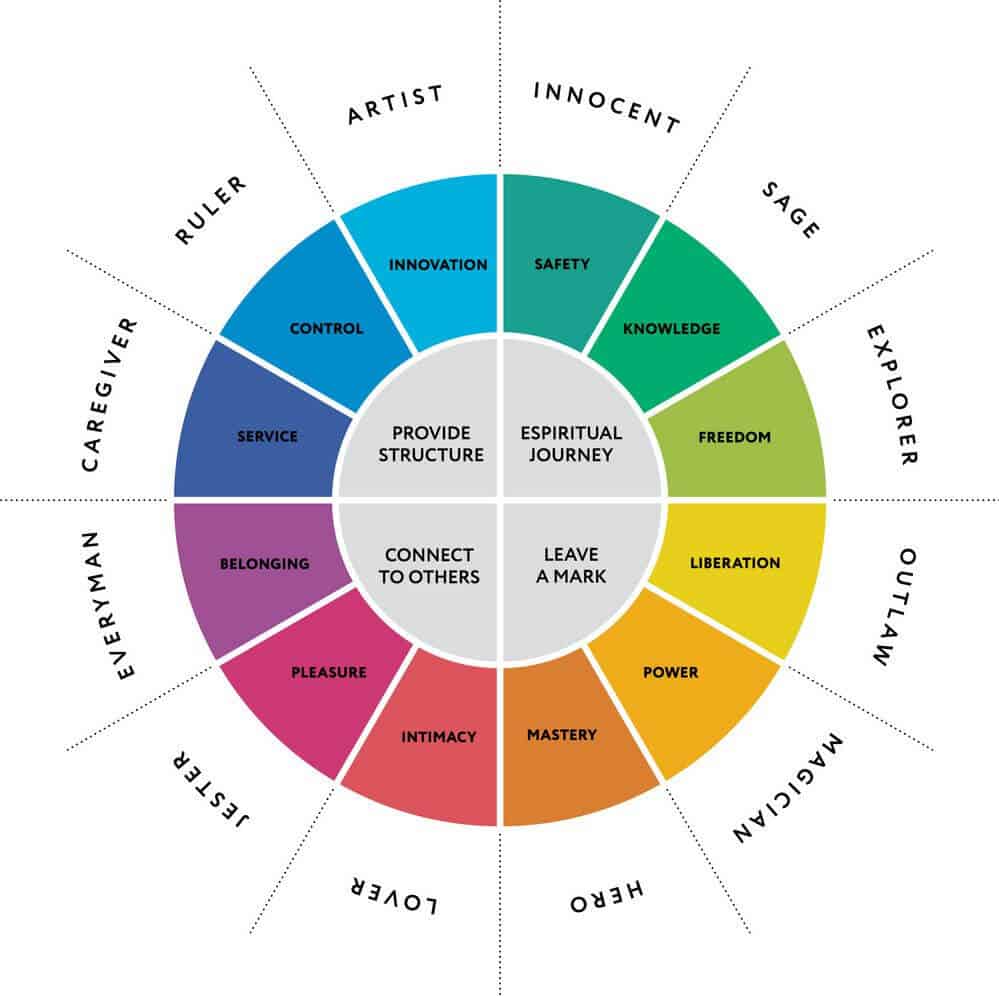Synopsis: Discovering the archetype of your ideal client unlocks the key to forging profound connections, generating leads, and fostering business growth. Archetypes wield significant influence, empowering coaches and businesses in lead generation. By unraveling the archetype of your ideal clients, you pave the way for authentic connections, consumer interest, and qualified leads. Without this insight, you risk weaker bonds with potential customers, leaving them vulnerable to competing offers.
But what is an archetype? And how can it help you form emotional connections with potential clients and customers? Let’s get started!
Table of Contents
Understanding Archetypes

In the realm of psychology, archetypes are universally recognized patterns, symbols, or prototypes that represent specific ideas, concepts, or characters. Coined by Swiss psychiatrist Carl Jung, these archetypes are deeply ingrained in our collective consciousness, forming fundamental building blocks of human experience. At their core, archetypes offer a profound understanding of personality, shedding light on motivations, fears, beliefs, personality traits, and weaknesses, as well as the underlying themes and metaphors that shape our values. Through the lens of archetypes, we gain invaluable insights into the intricacies of the human psyche.
What are the 12 Archetypes?
The 12 commonly cited archetypes are the Innocent, Everyman, Hero, Outlaw, Explorer, Creator, Ruler, Magician, Lover, Caregiver, Jester, and Sage. If you study these archetypes you’ll gain valuable insights about your target audience that you can apply to your content marketing plan and lead generation strategy.

Image source: https://conorneill.com/2018/04/21/understanding-personality-the-12-jungian-archetypes/ July 24th 2023
Each archetype represents a distinctive persona, complete with its own set of desires, motivations, and fears that influence how individuals perceive and interact with the world around them.
The Innocent seeks safety and simplicity, the Hero strives for greatness and achievement, while the Outlaw rebels against the norm, and the Explorer craves adventure and new experiences. The Creator is driven by innovation and originality, the Ruler seeks control and order, and the Magician excels at transformation and personal growth. The Lover values connection and intimacy, the Caregiver finds purpose in helping others, and the Jester delights in humor and spontaneity. Lastly, the Sage pursues wisdom and understanding, seeking to enlighten and empower.
Understanding these archetypes enables you to delve into the psychology of your audience, connect with them on a profound level, and craft targeted messaging that resonates with their deepest aspirations, leading to powerful and meaningful interactions with your brand.
Which Archetype Describes Your Ideal Client?
A key part of any lead generation strategy is forming an emotional connection with your ideal client and customer. Archetypes can help you do that by giving you insight into their thoughts, hopes, dreams, and triggers. But which archetype or archetypes best describe your potential customers and clients?
There’s no magic shortcut to determining this, but there are plenty of clues at your disposal. Consider the steps you took toward identifying and defining your clients in our last blog post on buyer personas. Interviews, social listening, surveys, and other research techniques will help you understand your ideal clients. Now look at this process through the lens of Jung’s archetypes. Do any ring true?
Consider the demographics, psychographics, and values of your existing customer base. What is the nature of your business? What is your ideal client looking to add to their life? How do your services address that? Are they looking to be inspired like the Creator? Maybe they want to feel passion like the Lover or change like the Magician.
By identifying areas of need in your customers’ lives, you’ll be on your way toward turning visitors into prospective leads.
Using Archetypes in Lead Generation
Lead generation strategies work best when the potential customer is able to really see themselves reflected in the brand. All aspects of branding and the sales process should reflect the ideal clients‘ underlying archetype.
Components of Branding that Should Reflect Your Archetype
Some applications are obvious. Content marketing and social media posts should reflect the quest that motivates the ideal client. If you create content that touches this nerve, the results will be more deeply felt than simple features-based marketing.
Web copy written in the ‘buyer’s journey’ format places the reader inside the struggle and ties them to the value proposition at hand. This is a powerful technique that can build credibility, helping you generate leads and convert with ease..
Images, too, can be powerful motivators. A visitor who feels inspired by or connected to a powerful picture may be more motivated to sign up for a trial or download a PDF, thus becoming a qualified lead.
Testimonials are another great way to provide the kind of social proof that can bolster a lead generation campaign.
There are less obvious aspects of branding that contribute to perception as well. Different colours convey different emotions, with red often stirring passion, as orange denotes energy or optimism. Fonts, too, each have their own emotional component. Each of these things are worthy of consideration.
Lead generation campaigns are most effective when everything works in unison to reinforce the brand’s core values. This creates the kind of confidence that can help ideal clients move through the sales pipeline.
Examples of Archetypes in Sales and Branding
If you want proof that archetypes can be effective for sales teams, don’t take our word for it, consider these juggernauts of industry that have used the concept to great effect.

Nike: The Hero
Heroes want to reach goals. They’re interested in pushing limits, overcoming challenges, and achieving greatness. In short, they want to be told to just do it! (Sound familiar?) All aspects of Nike’s branding will reflect this desire, making them a powerful company with its ideal clients.
Coca-Cola: The Innocent
Can sugar water be a portal to a simpler time? Coca-Cola says yes! The beverage company has successfully convinced people that its product is a bonding agent, connecting generations. Their logo is classic and true, while their usage of imagery like Santa Clause is effective in creating a positive sentiment that becomes affiliated with the brand. Coca-Cola doesn’t just taste good, it feels good too!
It doesn’t end there. Harley-Davidson has made its brand synonymous with rebellion, while Apple positions itself as the innovative Magician. Google is the Sage and Dove the Caregiver. Each of these brands has used their alignment with these archetypes as valuable sales tools. Customers believe that their affiliation with these brands not only gives them a product or service, it actually says something about themselves.
Next Steps
Now that you grasp the power of archetypes and their role in lead generation, it’s time to put this knowledge into action. Embrace the frame of mind that views your brand as a living, breathing entity, with its unique personality represented by an archetype that resonates with your ideal client and customer. By consistently embodying this persona across your marketing efforts, from captivating blogs to engaging content, you’ll forge deeper connections with your audience and turn prospects into loyal clients and customers.
But you don’t have to navigate this journey alone. At Peak Ed Designs, we understand the significance of a strong web presence in attracting and engaging with your ideal customers and clients. Our holistic approach involves immersing ourselves in your business objectives and strategic aims. Armed with this understanding, we craft websites and services tailored precisely to move your business in the right direction and achieve the results you desire with ease.
Are you ready to elevate your online presence and drive remarkable leads to your business? Contact Peak Ed Designs today!
Your brand’s unique archetype, coupled with our expertise, is the winning formula that will shape the future of your business. Get ready to embark on a journey of success with Peak Ed Designs. Let’s make it happen, starting today!

Hi! Thank you for reading this blog post.
Ready to Amplify Your Online Presence, Boost Visibility, and Attract High-Paying Clients with Ease? Schedule a Call with Our Expert Team at Peak Ed Designs to Turbocharge Your Lead Generation and Convert More Leads into Valuable High-Paying Clients!!
Book a Call
